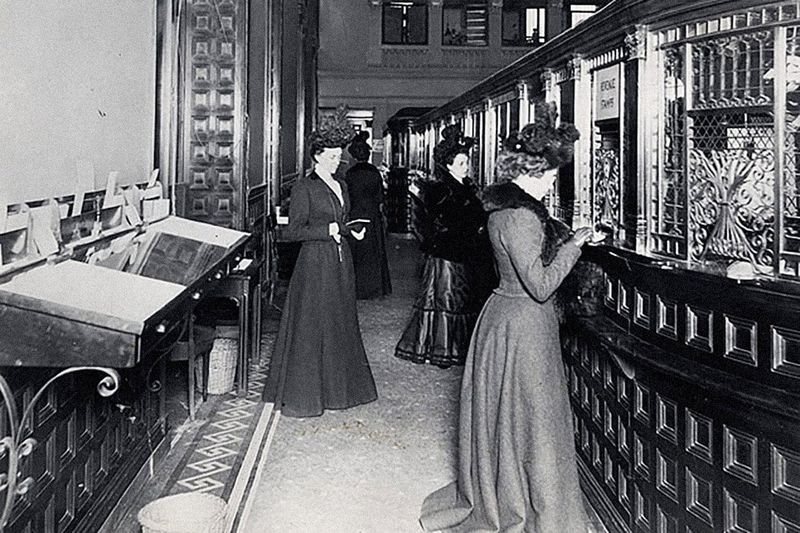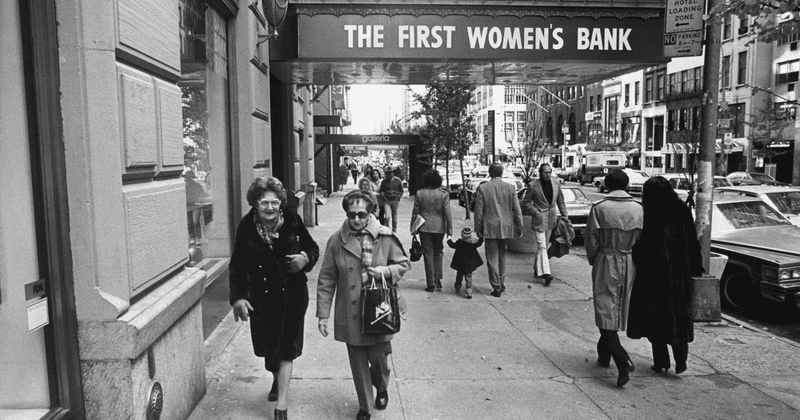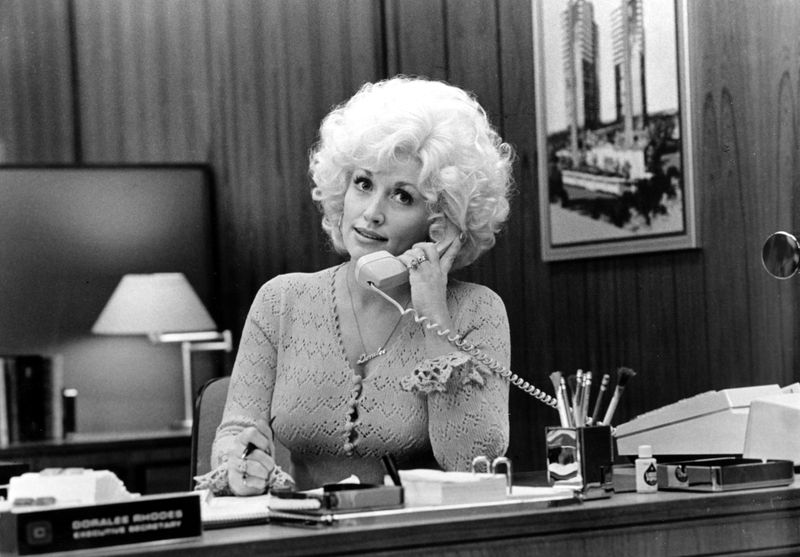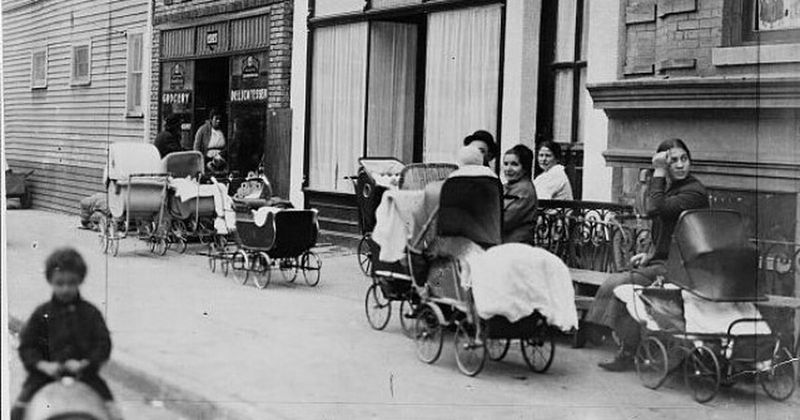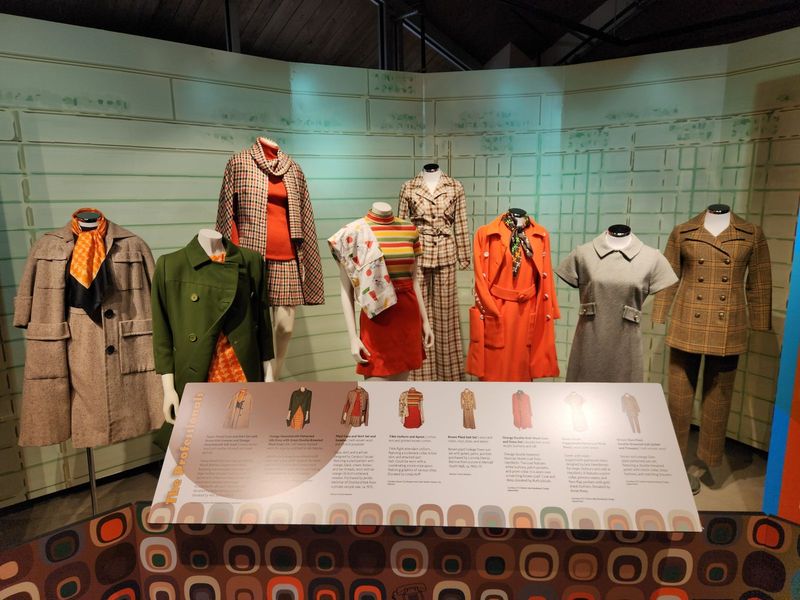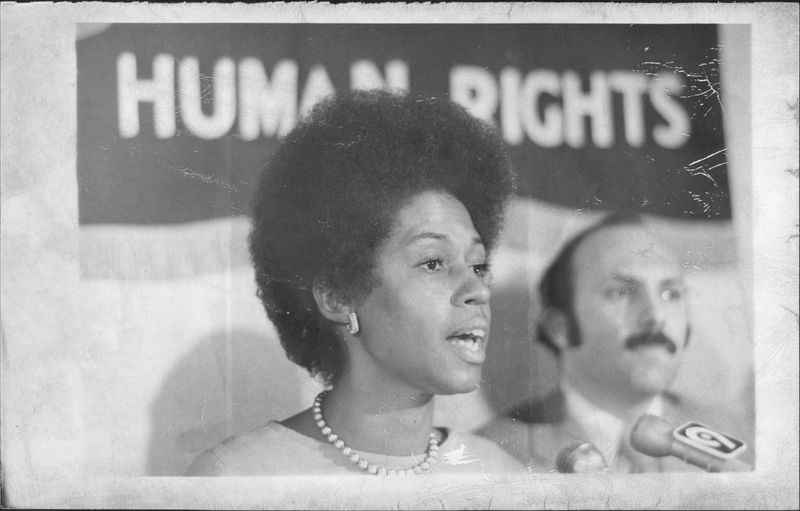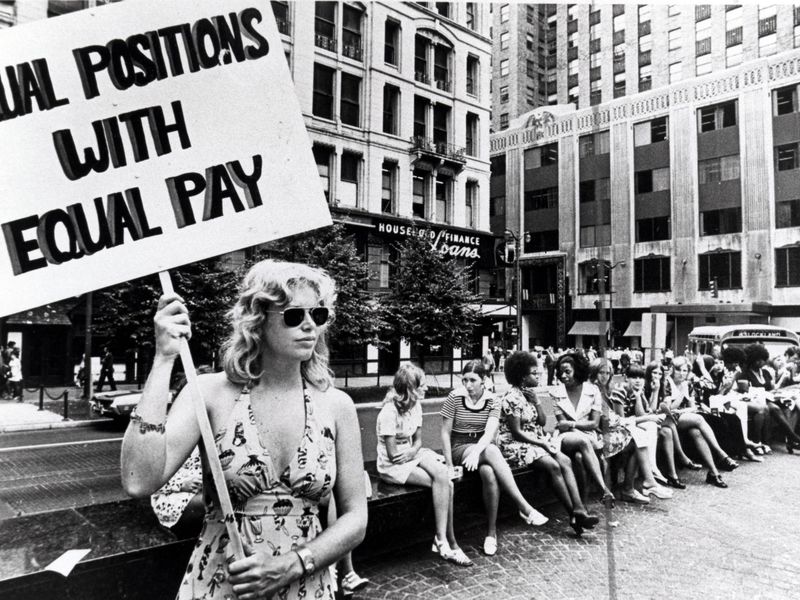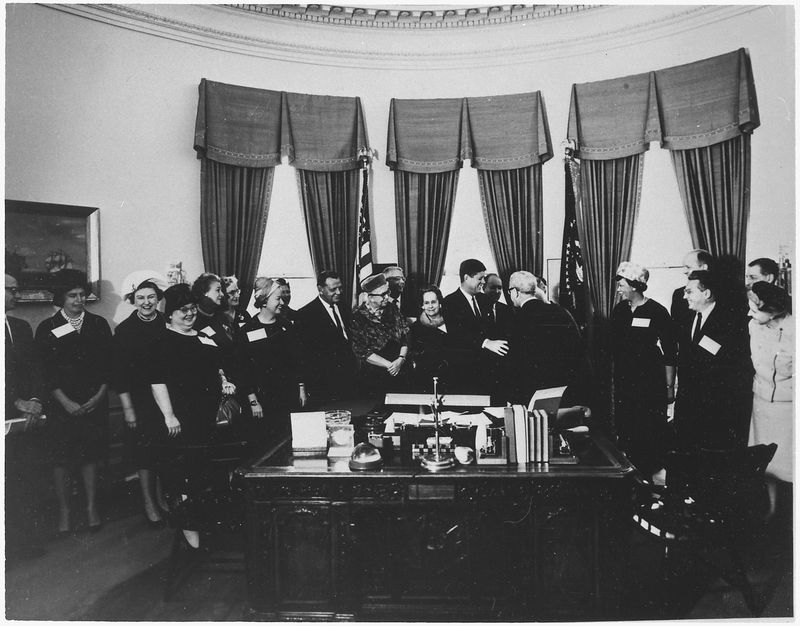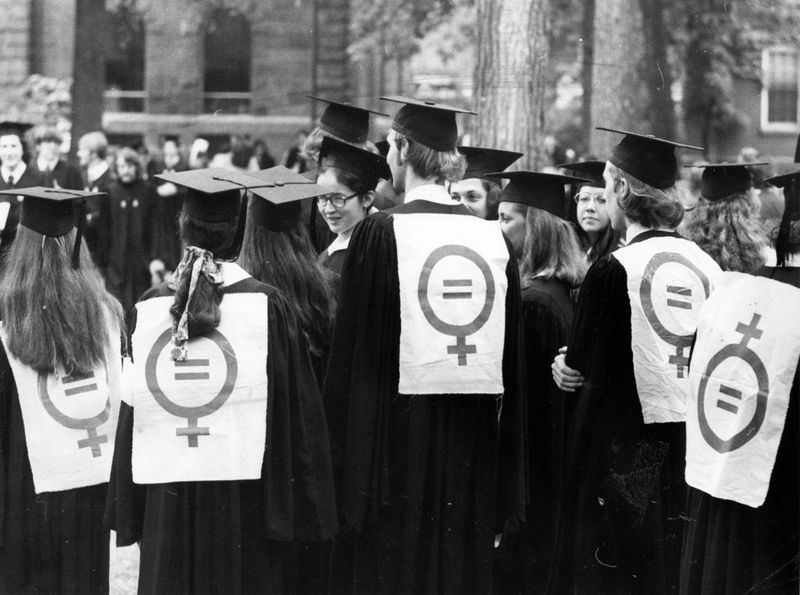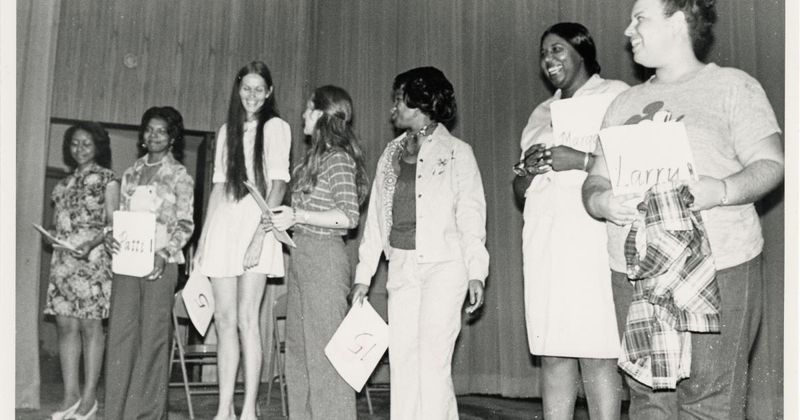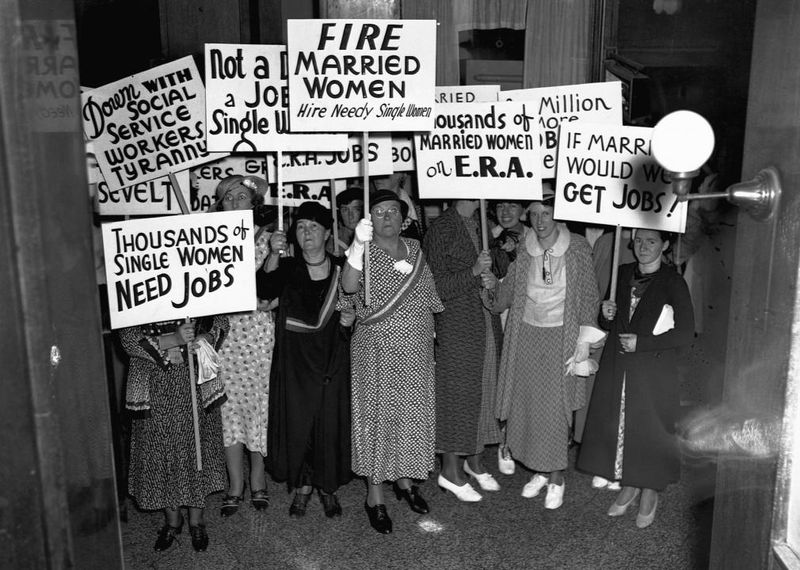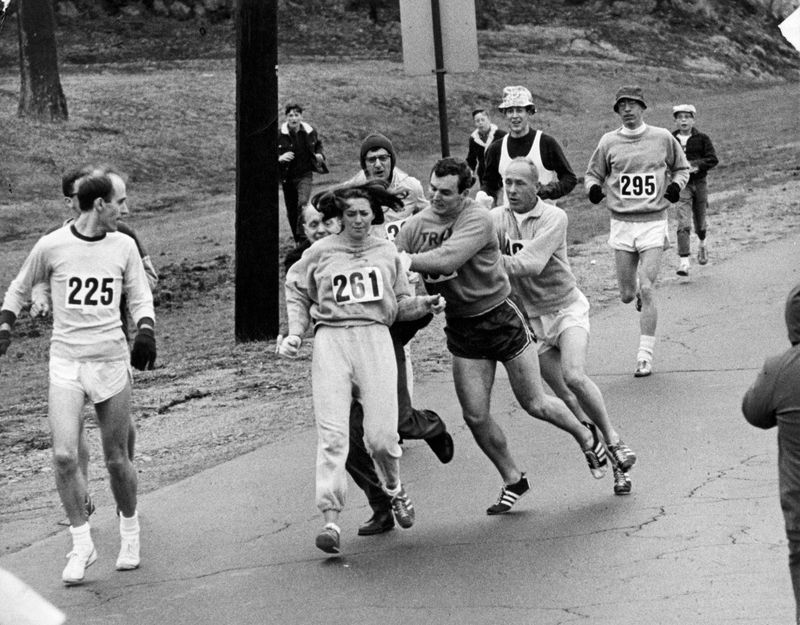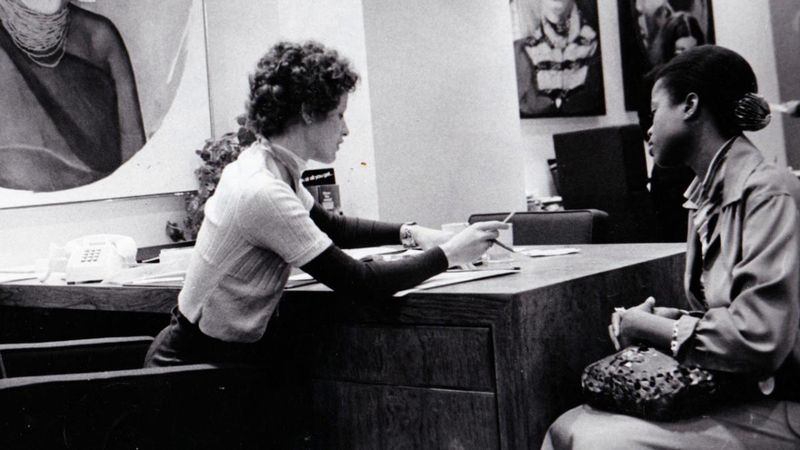The 1970s were a pivotal time for women’s rights in America. Despite significant progress from earlier decades, women still faced shocking restrictions and discrimination in nearly every aspect of daily life.
Looking back at these limitations reveals how far society has come in just 50 years, though many struggles continue today.
The following practices were once routine for American women but would cause outrage if attempted now.
1. Get a Husband’s Signature to Open a Bank Account
Women applying for bank accounts often faced a humiliating hurdle: requiring their husband’s permission. Financial institutions routinely denied married women the right to manage their own money independently.
Even women with substantial incomes couldn’t qualify for accounts without a male signature. The practice maintained financial control within marriages, effectively making wives economic dependents regardless of their earning potential.
This restriction began changing with the Equal Credit Opportunity Act of 1974, but many banks continued discriminatory practices well afterward. The contrast with today’s financial landscape, where women open accounts freely, highlights a dramatic shift in economic autonomy.
2. Be Denied a Credit Card Without a Male Co-Signer
Financial independence was nearly impossible for women in the early 1970s. Banks routinely rejected female applicants for credit cards regardless of their income or financial stability. A husband, father, or sometimes even a son had to co-sign applications.
Single women faced even steeper challenges, often being flatly denied credit access. Some divorced women discovered they had no credit history despite years of marriage because everything had been in their husband’s name.
The Equal Credit Opportunity Act of 1974 finally made gender-based credit discrimination illegal, though implementation took years. Modern women might find it hard to imagine needing male approval for financial tools we now take for granted.
3. Be Fired for Being Pregnant
Pregnancy announcements in 1970s workplaces often led directly to termination notices. Companies openly maintained policies requiring pregnant employees to leave their jobs, typically without guarantees of returning after childbirth.
Flight attendants faced particularly strict rules, with many airlines firing women as soon as pregnancy was detected. Teachers frequently lost their positions once they began “showing,” based on the bizarre notion that visible pregnancy would somehow corrupt students.
The Pregnancy Discrimination Act wasn’t passed until 1978, meaning throughout most of the decade, starting a family meant risking your career. The casual acceptance of this practice reflected deeper assumptions that women’s primary role was motherhood, not professional achievement.
4. Be Denied Birth Control if Unmarried
Family planning was considered a privilege of marriage, not a basic healthcare right. Unmarried women seeking contraception often faced harsh judgment and outright refusal from doctors who appointed themselves moral gatekeepers.
Many physicians required proof of marriage before prescribing birth control pills. Some women resorted to wearing fake wedding rings to appointments just to access basic reproductive healthcare.
The Supreme Court didn’t protect unmarried people’s right to contraception until Eisenstadt v. Baird in 1972, and even then, implementation varied widely by state and individual doctor. The notion that single women’s reproductive choices required oversight seems archaic today, yet this freedom is relatively recent.
5. Wear Mandatory Skirts or Dresses to Work and School
The 1970s workplace enforced strict gender-based dress codes that seem bizarre by today’s standards. Women could be sent home for wearing pants, regardless of weather conditions or practicality.
School dress codes similarly restricted girls to skirts and dresses, even in freezing temperatures. Some girls resorted to wearing pants under dresses for the walk to school, then removing them upon arrival.
The feminist movement gradually challenged these restrictions, with pants becoming more acceptable as the decade progressed. By today’s standards, controlling women’s clothing choices so rigidly would be considered an inappropriate overreach, yet this limitation was simply accepted as normal social conduct.
6. Tolerate Open Workplace Harassment
Women entering 1970s workplaces stepped into environments where unwanted advances, inappropriate touching, and crude comments were considered normal male behavior. Complaining about harassment often backfired, with women labeled as “troublemakers” or “too sensitive.”
Bosses routinely commented on female employees’ appearances or demanded personal favors without consequences. Many women developed elaborate strategies to avoid being alone with certain colleagues or superiors.
The term “sexual harassment” wasn’t even recognized in law until the late 1970s. Without legal protections or cultural disapproval, women had little recourse except to endure behavior that today would trigger immediate HR action and possible lawsuits.
7. Get Paid Less for the Same Job—Openly
Wage discrimination wasn’t just common in the 1970s—it was explicitly built into hiring practices. Job listings openly advertised different pay scales for men and women performing identical work.
Women were routinely told their salaries were lower because “men have families to support,” regardless of women’s actual financial responsibilities. Some companies maintained separate pay scales labeled “male” and “female” for the same positions.
While the Equal Pay Act had passed in 1963, enforcement was minimal and loopholes abundant. The blatant nature of wage discrimination stands in stark contrast to today’s environment, where such practices, though still existing, must at least operate covertly rather than as accepted business policy.
8. Be Excluded from Jury Duty by Default
The fundamental civic responsibility of jury service was routinely denied to women in several states well into the 1970s. Some jurisdictions completely excluded women from jury pools, while others made participation optional rather than mandatory as it was for men.
The reasoning behind these exclusions often centered on outdated notions about women’s primary responsibilities being in the home. States like Louisiana maintained that jury service would distract women from their domestic duties.
It wasn’t until 1975 that the Supreme Court ruled in Taylor v. Louisiana that excluding women from juries violated constitutional rights. This systematic exclusion from a basic citizenship role reflected deeper assumptions about women’s secondary status in public life.
9. Be Denied Admission to Certain Colleges and Programs
Educational gatekeeping severely limited women’s career options throughout the early 1970s. Prestigious universities maintained strict quotas for female students, with some programs accepting only a token handful of women each year.
Medical schools were particularly restrictive, with admissions officers openly stating they preferred male candidates who “wouldn’t waste their education by getting married and having children.” Law schools similarly maintained barriers, resulting in classes with just a small percentage of female students.
Harvard Business School didn’t admit women until 1963, and throughout the 1970s, female students remained rare in many professional programs. The educational barriers women faced directly impacted their career trajectories for decades afterward.
10. Accept “Wife” as the Default Occupation on Forms
Official paperwork regularly erased women’s professional identities in the 1970s. Government forms, loan applications, and medical records commonly listed “housewife” or simply “wife” as a woman’s occupation by default, regardless of her actual career.
Working women often had to cross out these pre-printed designations. The assumption that marriage defined a woman’s primary role was so embedded that even highly accomplished professionals might find themselves categorized first by marital status.
This seemingly small detail reflected larger societal expectations that women’s identities should be anchored to their husbands rather than their own achievements. The disappearance of these designations represents a significant shift in how women’s contributions are recognized and valued.
11. Get Fired for Getting Married
Wedding bells often meant career endings for women in certain professions. “Marriage bars” remained surprisingly common into the 1970s, particularly in teaching, nursing, and clerical positions.
The logic behind these policies claimed married women would inevitably become pregnant and leave their jobs, making them poor investments for employers. Some companies maintained unwritten but strictly enforced policies of terminating women upon marriage announcement.
Flight attendants faced especially rigid restrictions, with many airlines automatically firing women who married. The practice reflected broader assumptions that women’s careers were temporary phases before their “real” life as wives and mothers began, rather than meaningful professional paths deserving protection and development.
12. Ask a Doctor or Husband for Permission to Get Tubal Ligation
Women seeking permanent birth control faced extraordinary barriers in the 1970s. Many doctors refused to perform tubal ligations without written permission from a woman’s husband, regardless of her personal circumstances or wishes.
Medical paternalism created additional hurdles through arbitrary requirements. Common policies included refusing the procedure to women under 30 or those who hadn’t had a specific number of children—typically at least two.
Single women faced nearly insurmountable obstacles, with many doctors flatly refusing to consider their requests. The medical establishment’s comfort with overriding women’s reproductive autonomy reflected deeper assumptions about who should control female bodies and fertility—a mindset that still lingers in some medical settings today.
13. Be Banned from Running in Marathons
The 1967 Boston Marathon incident where officials physically tried to remove Katharine Switzer from the course illustrated the intensity of this discrimination. The Amateur Athletic Union, which governed most races, prohibited women from officially participating in events longer than 1.5 miles until the early 1970s.
Women weren’t officially allowed in the Boston Marathon until 1972, with other major marathons slowly following suit. The baseless concerns about women’s physical capabilities seem absurd today, yet they effectively barred women from competitive distance running for generations.
14. Not Be Considered for Police or Firefighter Roles
Women pursuing careers in emergency services faced closed doors and outright hostility. Police departments maintained explicit bans on female officers or restricted them to specialized “women’s bureaus” handling only juvenile or female suspects.
Firefighting remained even more impenetrable, with most departments refusing to consider female applicants regardless of their physical capabilities. The few pioneering women who managed to break these barriers faced relentless harassment and sabotage from male colleagues.
Physical testing requirements were often deliberately designed to exclude women rather than test job-relevant abilities. While today’s emergency services still struggle with gender balance, the overt exclusion of the 1970s—when departments would simply throw away female applications—represents a level of discrimination now legally indefensible.
15. Lose Custody of Children Due to Working Outside the Home
Mothers who pursued careers faced devastating consequences in 1970s custody battles. Family courts routinely awarded children to fathers or paternal grandparents based solely on the mother’s employment status, regardless of caregiving abilities.
Working mothers were labeled “neglectful” for not being home full-time, while fathers’ long work hours were considered normal and appropriate. The double standard created an impossible choice for women in unhappy marriages: remain financially dependent or risk losing their children.
Judges openly stated that children needed full-time maternal care, making employment itself evidence of maternal unfitness. This judicial bias reflected broader social attitudes that a woman’s dedication to motherhood should supersede all other aspects of her identity and ambition.
16. Be Required to Take Home Economics, Not Shop Class
School curriculums enforced rigid gender roles through mandatory class assignments. Girls were automatically enrolled in home economics courses focused on cooking, sewing, and household management, while boys took shop classes teaching valuable mechanical and construction skills.
Students attempting to cross these gender lines faced administrative resistance and social ridicule. A girl interested in woodworking or auto mechanics might be denied enrollment outright or discouraged through isolation and harassment.
This educational segregation had lasting economic consequences, steering girls away from technical fields with higher earning potential. The skills gap created by gendered education contributed to occupational segregation that persisted long after formal barriers fell, affecting career trajectories and earning potential for generations of women.
17. Endure “Obey” in Wedding Vows as Standard
Marriage ceremonies in the 1970s regularly included a stark inequality in vow language. Brides were expected to promise to “love, honor, and obey” their husbands, while grooms made no reciprocal pledge of obedience.
Women who requested modified vows often faced resistance from clergy and family members. Many were told that questioning traditional vows showed they weren’t ready for marriage or didn’t respect its sacred nature.
This linguistic difference reflected deeper assumptions about marriage as an institution where wives submitted to husbands’ authority. The gradual disappearance of “obey” from standard vows represents a fundamental shift in how marriage relationships are conceptualized—from hierarchical arrangements to partnerships of equals.
18. Be Forbidden to Join Certain Clubs or Organizations
Professional networking happened in spaces explicitly closed to women. Organizations like Rotary Club, Lions Club, and Kiwanis—crucial for business connections and community leadership—maintained men-only membership policies well into the 1970s and beyond.
Athletic clubs similarly excluded women or limited their access to certain days and times. Even university clubs maintained gender barriers, with Harvard’s faculty club not allowing women through the front door until 1971.
These exclusions weren’t merely social slights but significant career obstacles. Important business deals, professional mentoring, and political connections happened in these male-only spaces, creating an invisible barrier to women’s advancement that persisted even as formal workplace discrimination became illegal.
19. Be Treated as a Spouse’s Dependent for Tax and Legal Purposes
Legal independence was surprisingly elusive for married women in the 1970s. Tax codes classified wives as dependents rather than equal earners, even when they contributed substantially to household income.
Married women often couldn’t establish independent credit ratings regardless of their earnings. Their financial identity was subsumed under their husband’s, creating vulnerability if the marriage ended.
This dependent status extended beyond finances into legal matters, where married women sometimes couldn’t file lawsuits independently. The presumption that marriage transformed two individuals into a single entity—with the husband as the legally recognized head—created structural dependencies that limited women’s autonomy in ways that seem shockingly outdated by contemporary standards.
20. Be Barred from Serving in Combat Roles
Military career advancement hit a concrete ceiling for women in the 1970s through explicit combat exclusion policies. Female service members were categorically banned from roles considered combat-related, regardless of individual qualifications or abilities.
These restrictions affected far more than front-line positions. Combat experience was crucial for promotion to senior leadership roles, effectively blocking women’s advancement to the highest military ranks.
Women were also excluded from elite military training programs and special operations units. The combat exclusion policy remained in effect until 2013, making it one of the longest-lasting formal gender barriers in American professional life—a reminder that some restrictions from the 1970s persisted well into the 21st century.

